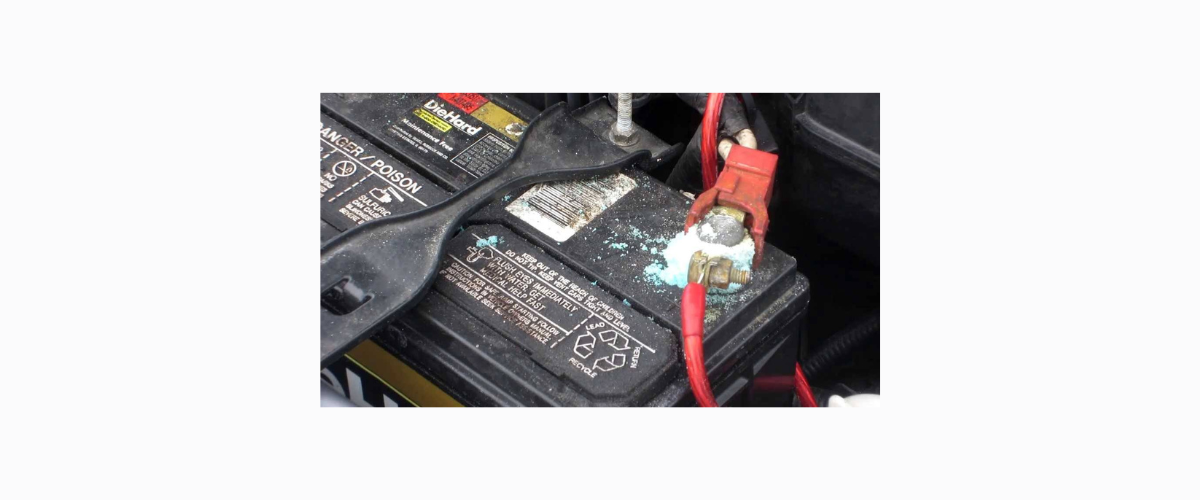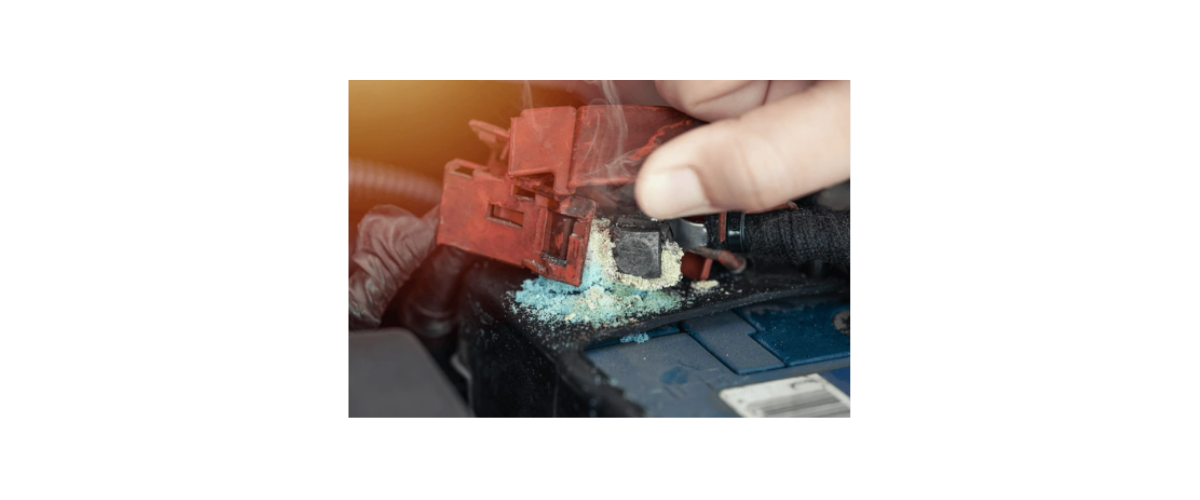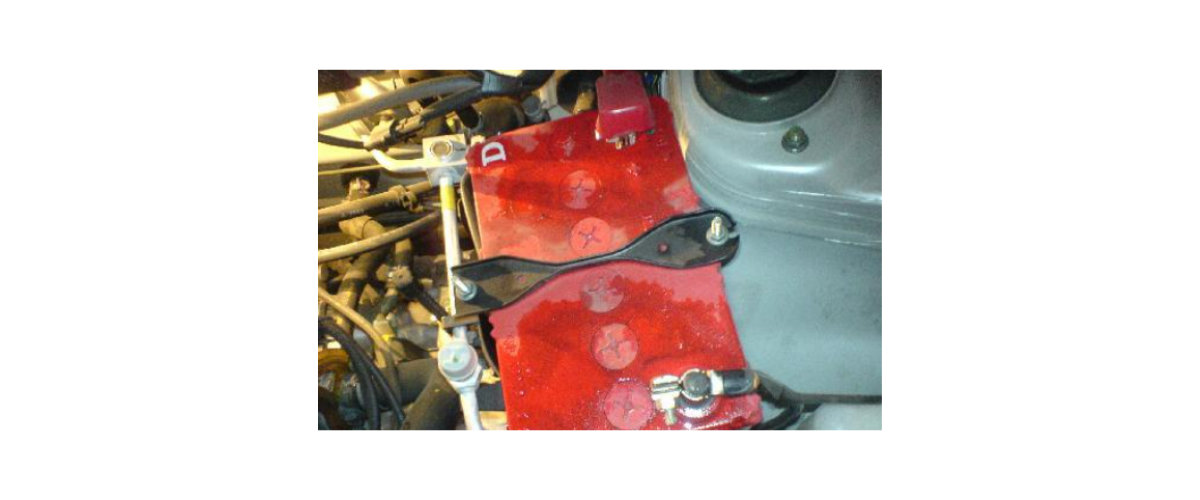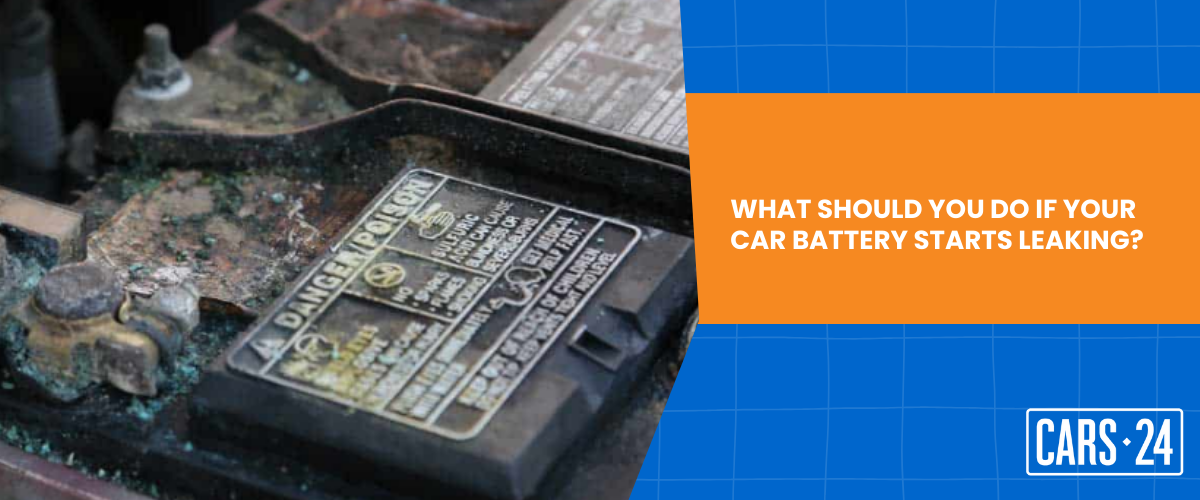A car battery is an essential component of your vehicle. It is the prime role of your battery to give the car enough power to start the engine by turning the starter motor. Once the car has powered up, the alternator takes the front seat and generates electricity to charge the battery back. This rhythm is what keeps your car running. Car batteries are also responsible for running your electric-powered appliances such as air conditioners, infotainment systems, lights and any other accessories.
Car batteries need to be monitored constantly. If you notice your car battery leaking, take action immediately and do not take it lightly. This guide will tell you the possible reasons for car battery leakage and what you should do when it happens.
How to check if your car battery is leaking?
Just like every other component in the hood, car batteries arent immune to failures, however, due to car batteries having a different world of science going on, it can cause a lot more problems than other parts. All of the worries start with a leak, here are some ways to check it.
1.Visual Inspection: Pop the hood open and check for any signs of corrosion on the battery or neighbouring parts. Even a white powdery residue is a red flag. Check carefully and wear safety gloves if youre inclined to go all forensics on it.

2. Battery Case Inspection: Carefully remove the battery and check it for any cracks, unusual bulges or swelling. Anything out of shape could be a potential reason for a leak. It might not look problematic when its removed but when the car is in motion and things are heated, it can cause problems.
3. Battery Terminal Inspection: While youre at it, check the battery terminal closely as well. Corrosion on the terminal points can also be an indication that your battery is overdue for a change.

4. Smell Test: The most common one. When chemicals start leaking, they release a certain odour. If you smell anything acidic it’s probably your battery leaking.

5. Wetness Inspection: If the battery starts leaking, there is a high chance that there will be some oily or liquid residue at the base of the battery or on the frame where it is mounted.

What are the possible causes of battery leaks?
Car batteries can start leaking due to multiple reasons. Sometimes theyre just built and manufactured wrong. We advise you to invest in a car battery from a reputed brand and opt for the warranty just in case theres an issue. Another reason could be electrolyte imbalance. Which can be caused due to poor maintenance.
Over time, a car battery uses up all its chemicals, causing it to fail. The cars battery depletes and can no longer keep up with the engines demands. This could lead to leakage. Following are some reasons why the battery starts leaking acid.
- Dont overcharge your battery: A fairly direct cause that most of us are aware of. Overcharging the car battery will cause the car to be overcharged which will decrease the lifespan of a battery causing it to malfunction sooner than you expect.
- Cracks in the battery: If your automobile battery has cracks, it could cause it to leak. If your battery shatters, it could leak acid. Ensure that your battery has never had any type of impact. Check it for dents or erroneous shapes. If youre buying a new battery ensure that the new battery has a pristine shape and no cuts, nicks or dents.
- Overfilling the battery: Regardless of the situation, recharging the battery is a must. However, if you add too much water, electrolyte levels will expand when water is introduced before charging, which can harm your car battery and cause it to leak. Stick to this advice Dont drain it empty, dont fill it up .
- Age & Wear: With time and tide, your battery will fail to maintain its strength and might be vulnerable to leaks. Know when to change.
- Faulty Seals: The seals on the battery may degrade over time causing the acid to start leaking.
- Vibrations & Impacts: When diving in rough conditions and challenging terrains, sudden impacts and movements can compromise the structure of the battery resulting in leakage.
- Incorrect Installation: If youre not entirely sure what goes where and what is linked where, we suggest you go to a mechanic. Improper installation can cause acid to leak faster.
What should you do when a car battery starts leaking?
While the steps are denoted for you, we insist on seeking professional help or assistance from a service centre of the manufacturer to minimise the risk of harm to yourself. Further, if the leakage is structural (e.g., due to a bulge or crack in the battery), it is strongly advised to go for a battery replacement instead of repair.
Step-by-step instructions on how to fix a leaky automobile battery are provided below:
- Make sure that the battery posts are uncapped before you start working on them.
- Bring a plastic container and transfer the electrolyte from the battery into the container. Battery electrolyte is highly corrosive; thus, you must use caution when transferring it from the battery.
- Neutralise the sulfuric acid in the plastic container with baking soda.
- When your automobile battery case is free of liquids, you must sand the cracked region of your battery with sandpaper until the creak is level and smooth to the touch of your palm.
- Apply the sealant to the cracked area and allow it to dry for a minimum of two hours before touching it again.
- Recondition the electrolyte in this final step. Youll also need three cups of distilled water that has been heated to 150 F.
- Add one cup of Epsom salt to the hot water and let it cool. This completes the bathing process.
- Fill the electrolyte with ice-cold water (water that has been dissolved in Epsom salt). And then refill the battery with the electrolyte that has been removed from the battery.
- To prevent corrosion and rust on your car battery, wipe up any water that may have gotten on the surface of the battery and let it dry completely.
- Install new caps and tighten them down on the battery terminal posts.
- Shake and charge the battery for at least 36 hours with the trickle charger for this final step in repairing a leaking automobile battery.
Is a leaking battery dangerous?
Very!
Leaking batteries can cause other components under the hood to corrode and malfunction. It can cause a domino effect of things going wrong.
If the battery is leaking, don’t touch it with your hands. Wear protective gear even to remove the battery itself. The fumes, the oil, and the surface can cause severe chemical burns. A leaking battery is a fire hazard itself, thus as long as the battery is leaking the danger isnt really behind you. Stay safe and get it checked and replaced if necessary.
Conclusion
If you see any signs of acid leakage from your cars battery, you must immediately act. It is possible to fix or dispose of your automobile battery yourself if the issue is not dire enough for you to call in professionals. Have a professional check your car battery if youre experiencing persistent issues to be on the safe side.
FAQs
1.What are the symptoms of a leaking car battery?
Symptoms include corrosion around terminals, a sulfurous smell, low fluid levels, and a compromised battery casing. Visual inspection is essential for early detection.
2. What kind of fluid is my car battery leaking?
Car batteries typically leak sulfuric acid. It appears as a corrosive, sometimes oily substance. Identifying and addressing leaks promptly is crucial for safety and vehicle performance.
3. What should I do if I touch the contents of a leaking car battery?
If you touch leaking battery contents, wash the affected area with plenty of water immediately. Seek medical attention if irritation persists. Wear protective gear when handling batteries.
4. How do I clean corroded battery terminals?
Clean corroded battery terminals by disconnecting the battery, applying a baking soda-water paste, scrubbing with a brush, and rinsing with water. Regular maintenance helps prevent corrosion.
5. How do I dispose of a leaking car battery?
Dispose of a leaking car battery at a recycling facility or a designated collection point. Follow local regulations to ensure proper and safe disposal of hazardous materials.
6. Why cant I throw a dead car battery in the trash?
Dead car batteries contain hazardous materials. Improper disposal harms the environment. Recycling facilities can extract valuable materials and minimise environmental impact.
7. What are maintenance-free battery units?
Maintenance-free battery units are sealed, reducing the need for electrolyte checks and water refilling. They provide convenience and minimise the risk of spills or leaks.
8. Is it safe to use a leaking battery?
Using a leaking battery is unsafe. Leaks can lead to acid exposure, damage to vehicle components, and potential hazards. Replace or repair the battery promptly.
9. What happens if I touch a leaking battery?
If you touch a leaking battery, wash the affected area immediately with water. Acid exposure can cause burns. Seek medical attention if irritation persists.
10. Can you clean the battery leakage?
You can clean battery leakage using a baking soda-water paste to neutralise acid, followed by thorough rinsing with water. Wear protective gear during the cleaning process.

Comments
New Comment